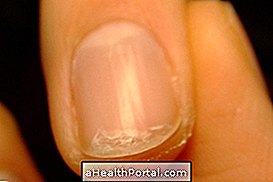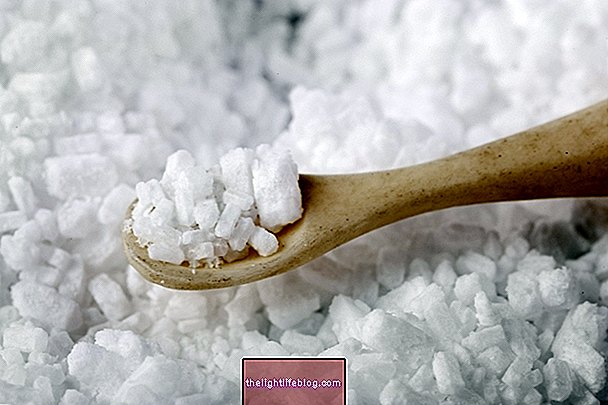Enamel allergy is usually caused by the chemicals contained in the enamel, such as toluene or formaldehyde for example, and although it has no cure, it can be controlled using antiallergic enamels or nail adhesives, for example.
This type of allergy is known as contact dermatitis, affects many women and is an exaggerated response of the immune system to the chemicals present in the enamel, which can cause symptoms such as chipped and brittle nails or itching and redness on the skin of the fingers, eyes, face or neck.
How to identify allergy to enamel
To identify allergy to enamel, it is important to be aware of the appearance of symptoms that indicate the presence of allergy, such as:
- Fragile nails, which chip and break easily;
- Reddish skin with bubbles around the nails, eyes, face or neck;
- Itching and pain in the skin of the fingers, eyes, face or neck;
- Water bubbles on the fingers;
- Dry, scaly skin on the fingers, eyes, face, or neck;


Enamel allergy does not only cause nail symptoms but can also cause allergy symptoms in other parts of the body such as eyes, face or neck, for example, that are in frequent contact with nail polish. Here's how you can make a home remedy to relieve allergy symptoms in Home Remedy for Skin Allergy.
In case of allergy to enamel, not all symptoms need to be present, so if you notice that your nails are weak or brittle for no apparent reason, or if you feel redness or itchy skin, you should consult your dermatologist as soon as possible.
However, weak and brittle nails are not always synonymous with allergy to enamel, and may be associated with other factors such as use of gel nails, gel or due to diseases such as anemia. If you have weak and brittle nails, a home remedy made with jojoba oil and sweet almond oil, it can be a good natural choice to strengthen your nails.
Diagnosis and treatment of allergy to enamel
The diagnosis of allergy to enamel can be made through an allergy test, requested by the dermatologist, which consists of applying various substances known to cause allergies in different regions of the skin, letting them act for about 24 to 48 hours. After the indicated time, the doctor will then observe whether the test was positive or negative, noting if there was redness, blisters or itching of the skin.
If the allergy test is positive, that is, if the doctor observes any symptoms, the doctor may then start treatment with antiallergic medicines such as Loratadine or Allegra, for example, or with corticosteroids such as Betamethasone, which may relieve allergy symptoms. This remedies can be used in oral form in tablets, or in the form of ointment to apply directly to the skin.
What to do if you have allergy to enamel
Since there is no cure for allergy to enamel, with only the option of using antiallergic remedies that decrease the symptoms, there are some tips and alternatives that can help prevent allergy such as:
- Change of enamel mark, as it may happen to make allergy to certain components of specific brands of enamels;
- Use hypoallergenic enamel remover, never acetone, as it may aggravate allergy reactions on the skin, and may even be irritating to the skin;
- Use enamels without Toluene or Formaldehyde, as they are the main chemicals that cause enamel allergy;
- Use hypoallergenic or antiallergic enamels, made without substances that may cause allergy reactions;
- Use nail stickers to decorate nails, rather than enamel;
In case of allergy to enamel, it is best not to paint the nails, although this is the best option, it is no longer pleasant and should only be considered when there are no other alternatives to control the allergy or when this is recommended by the doctor.
How to Make Homemade Antiallergic Enamel
Another good option for anyone who has enamel allergy is to make antiallergic glazes of the favorite colors at home, which can be done as follows:
- Ingredients: 1 white or colorless allergy enamel + 1 antiallergic powder eye shadow of the desired color + banana oil;
- How to prepare: Scrape the desired shade, using a toothpick, on a paper, and making a small filter with the paper, put the powder inside the glass of the enamel. Add 2 or 3 drops of banana oil, cover the enamel and mix well.

This homemade enamel should be used as a common nail polish, and can be prepared directly inside the glass of white or clear enamel, or it can be prepared inside a separate container, just in enough quantity to use once. In addition, an antiallergic shade, such as an antiallergic blush can be used to prepare it, and if necessary, a small well-washed stone can be added to the enamel glass, which will facilitate mixing of the powder with the enamel.






















